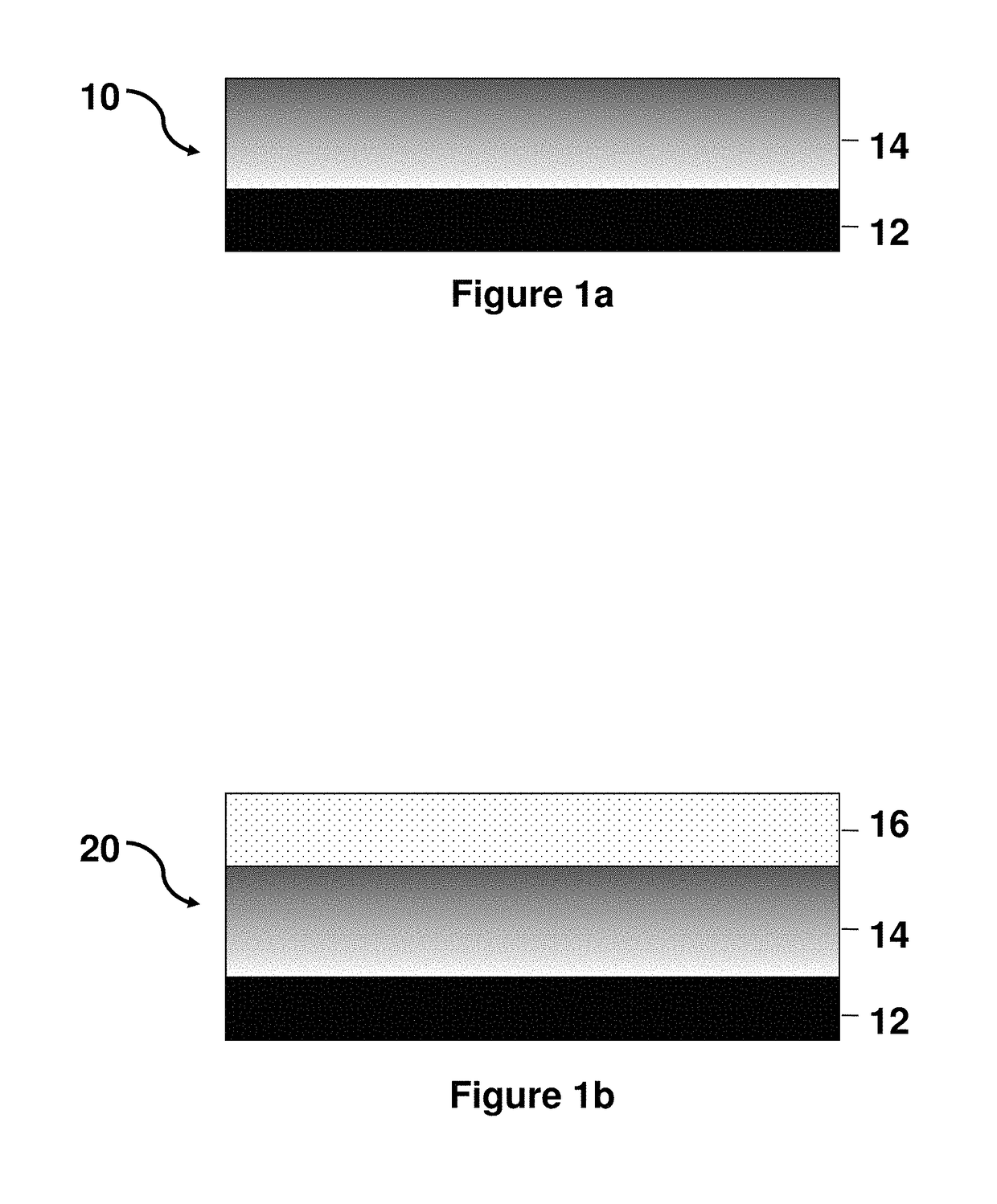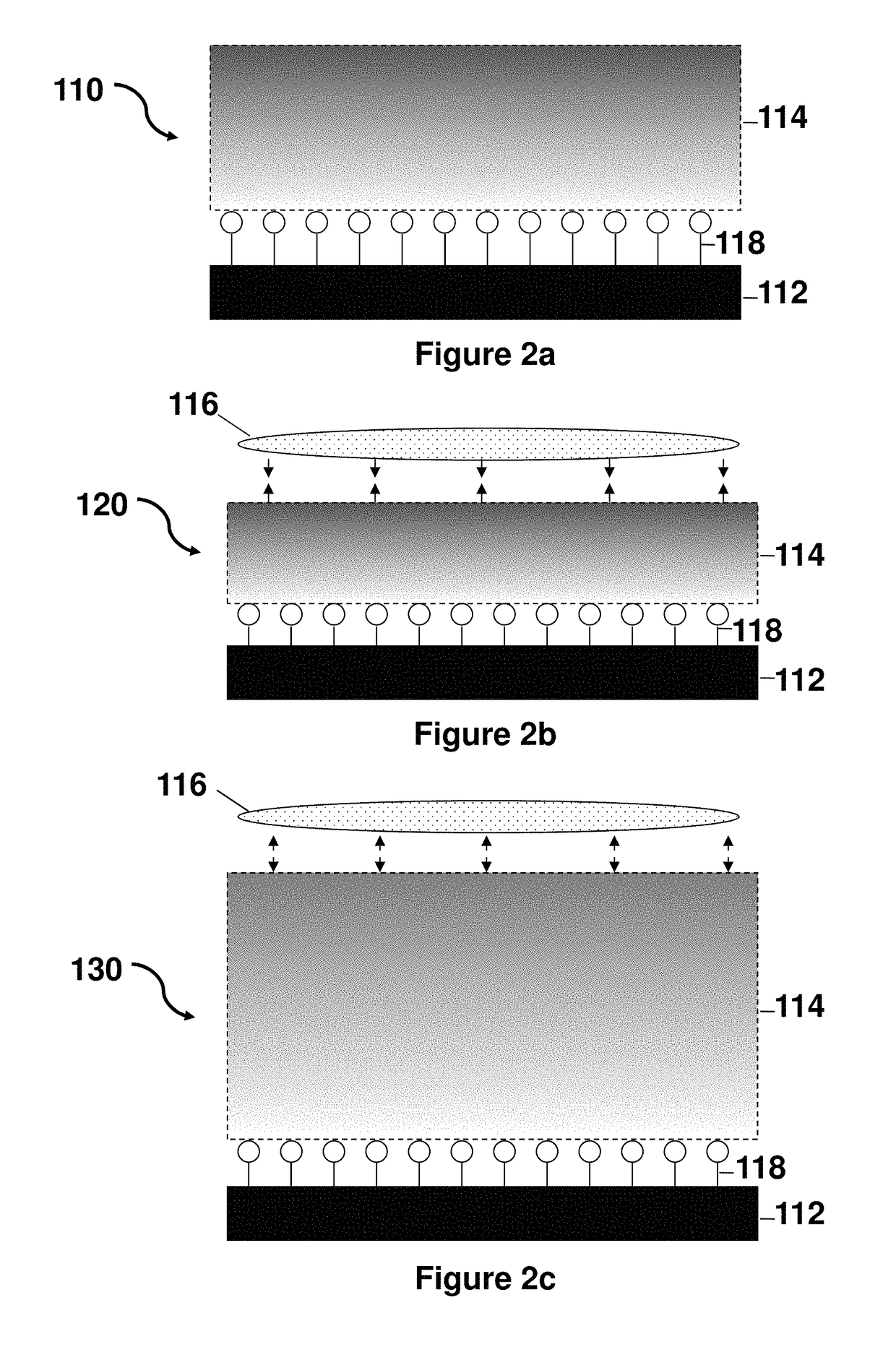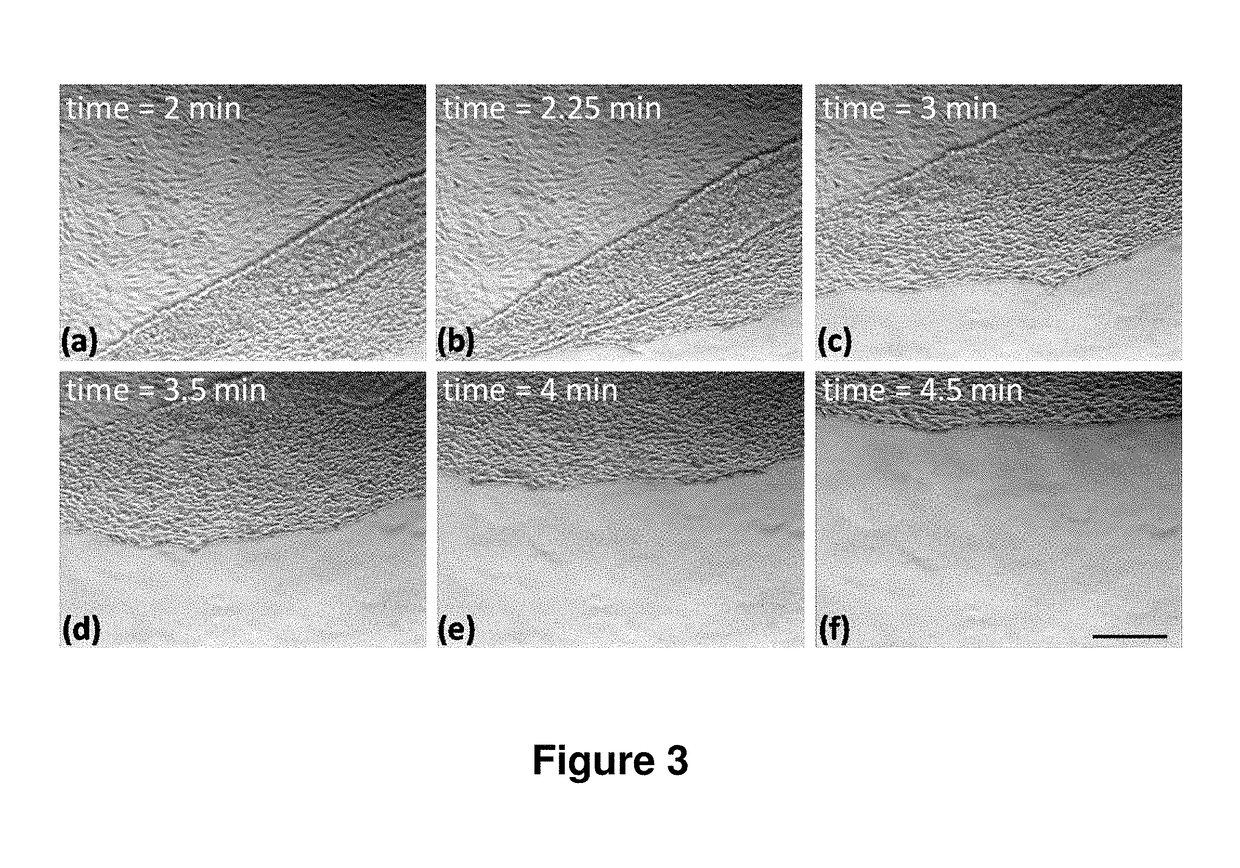Thermoresponsive cell culture supports
- Summary
- Abstract
- Description
- Claims
- Application Information
AI Technical Summary
Benefits of technology
Problems solved by technology
Method used
Image
Examples
example 1
Materials.
[0090]pNIPAAm, a molecular weight of 20-40 kg / mol was purchased from Sigma Aldrich (St. Louis, Mo., USA). 3-Mercaptopropyl)trimethoxysilane (MPTMS), Triethoxysilylbutyraldehyde (TESBA), 3-Acetoxypropyltrimethoxysilane (AOPTMS) and 3-(2,3-Epoxypropoxy)propyltrimethoxysilane (EPPTMS) were from Gelest. Glass slides and P(100) test type silicon-wafers were purchased from Fisher Scientific (Waltham, Mass., USA) and Silicon Quest International (Santa Clara, Calif.), respectively. Polydimethylsiloxane (PDMS) sheet was prepared using Sylgard® 184 elastomer and its curing agent (Dow Corning, Midland, Mich.) according to the manufacture's recipe. Lexan™ polycarbonate (PC) sheets, ¼″ thick, were purchased from Total Plastics Intl (Middleburg Heights, Ohio). All other chemical reagents were purchased from Sigma Aldrich unless otherwise indicated.
Preparation of Glass, Silicon Wafer (Si-Wafer), Polydimethylsiloxane (PDMS) and Polycarbonate (PC) Substrates.
[0091]Glass slides and Si-wafer...
PUM
| Property | Measurement | Unit |
|---|---|---|
| Fraction | aaaaa | aaaaa |
| Fraction | aaaaa | aaaaa |
| Fraction | aaaaa | aaaaa |
Abstract
Description
Claims
Application Information
 Login to View More
Login to View More - R&D
- Intellectual Property
- Life Sciences
- Materials
- Tech Scout
- Unparalleled Data Quality
- Higher Quality Content
- 60% Fewer Hallucinations
Browse by: Latest US Patents, China's latest patents, Technical Efficacy Thesaurus, Application Domain, Technology Topic, Popular Technical Reports.
© 2025 PatSnap. All rights reserved.Legal|Privacy policy|Modern Slavery Act Transparency Statement|Sitemap|About US| Contact US: help@patsnap.com



